Explore this article:
In the race to embrace low-carb eating, many health-conscious people have been eschewing fruit, pointing to the carbohydrates and their implication in the onset of many chronic diseases. But a lot of experts consider the backlash against fruit misguided.
“People are looking at fruit the same way they look at a piece of cake, and that’s simply not equivalent,” says Linda Shiue, MD, author of Spicebox Kitchen. “Fruit is a perfectly designed package of healthy goodness and joy.”
The sheer magnitude of fruit’s nutritional bounty is unequivocal. “Everyone has heard the adage ‘Let food be thy medicine,’” says integrative nutritionist Cindi Lockhart, RDN, LD. “But people might not realize that this medicine is coming largely from colorful plants, including fruit.”
“Fruit is a perfectly designed package of healthy goodness and joy.”
Yet many of us forfeit those benefits these days. The Centers for Disease Control and Prevention estimates 88 percent of Americans don’t get the recommended 1.5 to 2 cups of fruit per day.
Experts worry about the long-term health consequences of abstaining from fruit. “The laser focus on cutting carbohydrates without thinking about what the carbohydrate is embedded in is shortsighted,” says Simmons University professor of nutrition Teresa Fung, ScD, RD. “You can’t ignore the health benefits of fruit.”
Why Fruit?
Fruit’s two biggest deliverables are polyphenols and fiber.
Polyphenols, a type of phytonutrient, are among the richest sources of antioxidants and are partly responsible for fruit’s color and flavor.
“Polyphenols are critical for the function of every cell in the body,” says functional-medicine physician Susan Blum, MD, MPH. “The phytonutrients in fruit are where you get the antioxidants that synergistically help your body fend off the diseases of aging.” (See “What Is a Phytochemical?” for more.)
Studies suggest that people who eat more fruit may have lower risk of developing hypertension, type 2 diabetes, and certain types of cancer.
Think of antioxidants as the body’s equivalent of a security detail: These compounds seek out and shut down the destructive effects of free radicals, which damage DNA and cell tissue. “The antioxidants in fruit quench the smoldering embers of inflammation,” says Blum. “Left unchecked, those embers ignite disease.”
Fiber is an equally important reason to eat more fruit. The average American is fiber-starved, eating just 10 to 15 grams of fiber a day — around half of the 28 grams recommended by the U.S. Food and Drug Administration (FDA). “If we cut fruit out of our diets, it’s a lost opportunity for fiber,” says Fung.
Fiber’s bona fides are undeniable. Those who eat more of it are less likely to suffer from heart disease, stroke, type 2 diabetes, and common cancers, including breast and colon. (Dietary fiber performs other surprising key roles as well. For more, check out “Fiber: Why It Matters More Than You Think.”)
What’s more, fiber-rich foods, including fruit, inch through the intestines more slowly than simple carbs, triggering earlier satiety and staving off hunger.
In short, says Fung, “denying yourself fruit costs your body the opportunity for an easy source of fiber and antioxidants.”
But What About Fructose?
Some people worry about a sugar in fruit called fructose. Consuming large quantities of this simple carbohydrate can lead to a number of health complications, including an increased risk for hyperinsulinemia and liver disorders.
Fructose can indeed be insidious. Eat more than the body can process and it goes straight to the liver, where it turns into fat. If the fat stays in the liver, it can contribute to a list of complex metabolic issues, including nonalcoholic fatty liver disease (NAFLD) and type 2 diabetes. (For more on the rise of fatty liver, see “The Hidden Liver Crisis.”)
Conversely, if the liver exports the fat, it may lead to obesity and heart disease.
The fiber in fruit is the key here, says Robert Lustig, MD, MSL, a pediatric endocrinologist and professor emeritus at the University of California, San Francisco. He refers to sugar as “poison” and likens fructose to alcohol for its ability to damage the liver. “Fiber,” he explains, “limits the body’s absorption of fructose, so the liver doesn’t get overwhelmed.”
“Fiber limits the body’s absorption of fructose, so the liver doesn’t get overwhelmed.”
Lustig notes that a medium-size apple has roughly 10 grams of fructose and, more importantly, two types of fiber: soluble and insoluble. Eat an apple, and the soluble fiber coats the intestinal lining, moderating the effect of the apple’s fructose on the body. “Picture soluble fiber as petroleum jelly and insoluble fiber as a spaghetti colander: The jelly plugs the holes in the colander,” he says.
At this point, any leftover fructose becomes fodder for the microbiome, Lustig says. “Nature made sure that however much fructose is in a piece of fruit, the antidote is in there too.” (For even more on the benefits of fiber, see “Why You Need to Eat Fiber.”)
So go ahead and enjoy fruit. “Fruit has such unique flavors, textures, and scents,” says Shiue. “It is something to be savored and celebrated.”
What follows are some favorites — plus some protein pairings to improve satiety and stabilize blood sugar.
Protein Pairings to Support Satiety and Blood Sugar Stability
 Apples and Pears
Apples and Pears
→ Good sources of fiber and quercetin.
Often described as “hard fruits,” apples and pears are best eaten fresh and whole to take full advantage of their fiber and antioxidants, most of which are concentrated in the skin.
European pears are categorized as fall (but sometimes referred to as summer) pears, such as Bartlett, and winter pears, such as Bosc. One large pear contains about 7 grams of fiber, roughly 25 percent of the daily recommended amount. (Explore this article for pears recipes, techniques, and more.)
Apples are a bit more durable, and good ones are available year-round, which make them a fan favorite. “I always have an apple in my bag because it’s the perfect snack,” says Shiue. The average American consumes more than 15 pounds of fresh apples a year, though that total does not include apple juice, which has a more complicated nutritional picture (see “How to Protect Your Blood Sugar” at the end of this article).
Compared with other fruits, apples may seem basic, but they are a nutritional powerhouse hiding in plain sight. A metaanalysis published in 2016 found that consuming apples is associated with lower incidences of cancers of the lung, colon, esophagus, digestive tract, and breast.
Apples are also high in quercetin, a powerful anti-inflammatory and antioxidant that may help lower both blood pressure and the risk of heart attack. Quercetin doubles as a mast-cell stabilizer, meaning it interrupts the body’s production of histamine, the neurotransmitter that triggers swollen sinuses, sneezing, and watery eyes. Quercetin is why Blum recommends apples “for people with histamine or allergy issues.” (For more on quercetin, see “What Are the Health Benefits of Quercetin?“)
Ideal protein pairings for apples ( → ) Nut butter or cheddar cheese
Ideal protein pairing for pears ( → ) Blue cheese
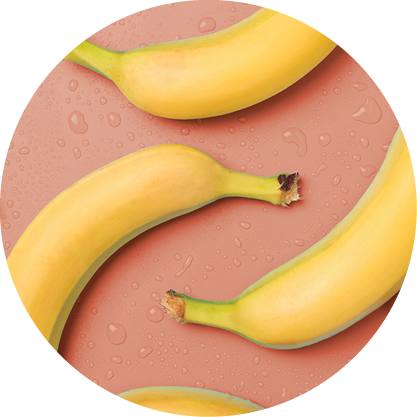 Bananas
Bananas
→ Good source of potassium and resistant starch
Bananas don’t get the love they deserve. Sure, their white flesh means they don’t get a spot on the nutrient color wheel, and the lack of fiber in ripe bananas can make them a mashable mess. But they are delicious, and let’s take a moment to appreciate their potassium.
A medium banana delivers 422 mg of potassium. An underappreciated workhorse, potassium maintains acid–base balance, helps build proteins, and even regulates the heartbeat.
Each of the body’s trillions of cells relies on potassium to manage fluid balance. Yet most American diets lack the mineral, prompting the U.S. Departments of Health and Human Services and Agriculture to label it a “nutrient of public health concern.”
Potassium isn’t all bananas have to offer. People with type 1 or type 2 diabetes or prediabetes may feel compelled to swear off bananas, but in their earliest stage of ripeness, tinged with green, they pose little threat to blood-glucose levels thanks to their resistant starch.
Resistant starch is a carbohydrate tough enough to survive the digestive juices of the small intestine. Because it doesn’t break down there, it does not raise blood-sugar levels. Instead, it travels to the large intestine, where it becomes brunch for your microbiome.
A diet with plenty of resistant starch increases feelings of fullness, prevents constipation, and lowers cholesterol. Recently, an animal study suggested resistant starch from green bananas can protect against NAFLD and help reinforce the gut lining, soothing conditions like inflammatory bowel disease. “I always eat my bananas at the green-turning-yellow stage,” says Blum. (For more on resistant starch, see “Resistant Starch for a Healthy Gut.”)
Ideal protein pairing for bananas ( → ) Nut butter
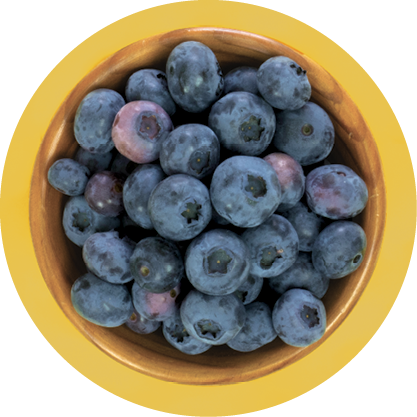 Berries
Berries
→ Good source of flavonoids
Berries are estimated to make up less than 10 percent of the average American’s fresh fruit intake, but ounce for ounce, they may convey more health benefits than any other fruit. Low in sugar and high in antioxidants, berries are a great option for people with insulin sensitivities, says Lockhart.
Berries owe their reputation as a superfood to a class of flavonoids called anthocyanins, and the average cup of berries contains anywhere from 30 to 735 mg of them. These natural plant pigments help defend cells from free radicals, and they’re responsible for berries’ signature hues.
Summer is an ideal time to enjoy some fresh and local berries, but don’t be afraid of frozen options — they might give you a chance to try something that doesn’t grow in your region. “Different antioxidants have various properties in terms of where they work in the body and what kind of free radicals they neutralize,” says Fung.
Have fun experimenting — blueberries, strawberries, blackberries, and goji berries all have something unique to offer.
Word to the wise: Because berries lack protective peels and are often sprayed with pesticides, it’s best to buy organic when possible. (For more on the benefits of specific berries, see “11 Berries to Eat and Their Health Benefits.”)
Ideal protein pairing for berries ( → ) Greek or Bulgarian yogurt for protein and probiotics
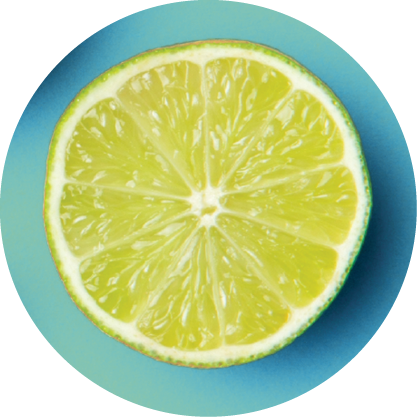 Citrus
Citrus
→ Good source of vitamin C, flavonoids, and fiber
Citrus fruits are the juicy gems of winter. Oranges, lemons, limes, pomelos, mandarins, and others reach peak ripeness in warm climates just as the northern hemisphere gets chilly and dark. It’s perfect timing for cold and flu season: One medium orange delivers almost a day’s dose of vitamin C.
The phytonutrients in citrus have anti-inflammatory, anticancer, antimicrobial, and antiallergy effects. Studies show that citrus protects the heart, brain, and liver.
Much like berries, each fruit has its own unique pattern of phytochemicals, so go for variety. The orange pigments found in tangerines and oranges deliver carotenoids like lutein, an anti-inflammatory that protects the eyes. Grapefruit provide flavonoids that may help prevent diabetes and heart disease.
Citrus is also full of fiber, 65 to 70 percent of which is pectin, a soluble form that acts as a prebiotic by feeding the microbiome. Good bacteria ferment pectin in the colon and create beneficial short-chain fatty acids, including acetate, propionate, and butyrate.
“If you don’t feed your bacteria, they will feed on you,” says Lustig. This damage can lead to gut issues like irritable bowel syndrome and inflammatory bowel disease.
Studies show pectin also helps maintain the intestine’s protective barrier. This matters, because when the gut’s bacteria get hungry, they will eat the mucosal layer. “If you don’t feed your bacteria, they will feed on you,” says Lustig. This damage can lead to gut issues like irritable bowel syndrome and inflammatory bowel disease.
Squeezing a wedge of lemon or lime into your water glass, salad bowl, or pan of sautéed vegetables is an easy way to get a dash of citrus, says Blum. She adds the juice of half a lime to her morning green drink.
Some citrus — primarily grapefruit but also limes and pomelos — contain furanocoumarins, plant substances that can interfere with dozens of drugs. Check with your healthcare provider about potential contraindications with your prescriptions. (For even more on why these bright, succulent fruits are so good for your health, plus creative ways to use them, see “The Health Benefits of Citrus Fruits.”)
Ideal protein pairing for lemons ( → ) Lemon with chicken
Ideal protein pairing for limes ( → ) Lime with black beans
Ideal protein pairing for mandarins ( → ) Cottage cheese
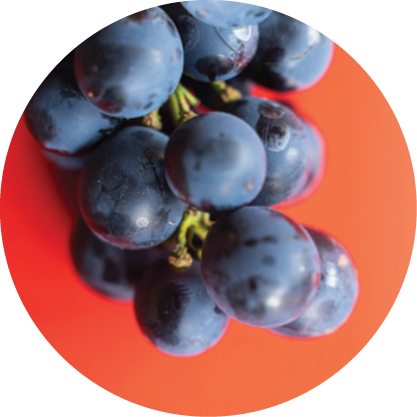 Grapes
Grapes
→ Good source of vitamin K and copper
One of the oldest cultivated fruits in the world, grapes have been grown by humans since the Neolithic era. Spanish explorers first brought them to the Americas almost 500 years ago.
The average American eats more than 8.5 pounds of fresh grapes a year — despite the fact that grapes often get the side-eye for their sweetness. But grapes contain more than 1,600 health-supporting phytonutrients, including quercetin and resveratrol. Studies have found that these phytonutrients can assist with arterial health, osteoarthritis, bladder function, and more.
Grapes contain more than 1,600 health-supporting phytonutrients, including quercetin and resveratrol.
Grapes are technically berries, and some varieties contain abundant anthocyanins, the plant compounds responsible for the deep reds, blues, purples, and other vibrant hues of those fruits.
Grapes are rich sources of copper and vitamin K as well as fiber, most of which is concentrated in the skin. “Grapes may have more sugar than some fruits, but grapes also have a high ratio of skin to pulp, and everyone eats the skin, which has most of the fiber, which helps moderate the effects on blood-sugar levels,” says Shiue.
Ideal protein pairings for grapes ( → ) Walnuts, almonds, and pretty much all cheeses
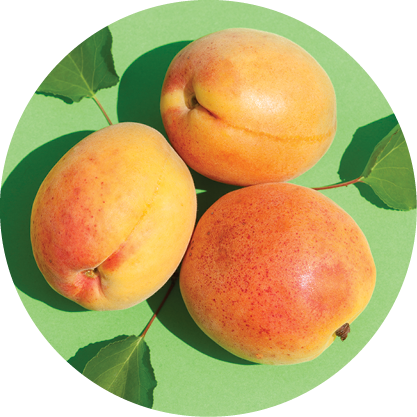 Stone Fruit
Stone Fruit
→ Good source of phenolic compounds
Stone fruits — think peaches, apricots, nectarines, plums, and cherries — are the true harbingers of summer. Typically fragrant and thin-skinned, they don’t travel well, making their peak season even more special.
Stone fruits are rich in phenolic compounds and terpenoids, with each fruit’s nutrient profile suggested by its color. With their golden flesh, peaches and apricots are high in carotenoids, including lutein and beta-carotene. Purple plums are rich in anthocyanins, and sweet cherries brim with flavonoids, including quercetin. The peel of stone fruits contains higher concentrations of certain phytonutrients — potentially twice as much — compared with the pulp, an extra incentive to buy organic when you can.
Ideal protein pairing for peaches ( → ) Pecans
Ideal protein pairing for plums ( → ) Almonds
 Melons
Melons
→ Good source of vitamin C and potassium
Melons are superbly versatile. They make an excellent breakfast, snack, dessert, or picnic treat (try this refreshing watermelon sorbet to start). Members of the cucurbit family, which includes cucumbers, melons are believed to be native to Africa and Asia.
Watermelon, cantaloupe, and honeydew are common varieties in the United States, and the average American is estimated to enjoy 15.5 pounds of watermelon, 6.1 pounds of cantaloupe, and 1.4 pounds of honeydew each year.
A hot-weather staple, watermelon is more than just hydrating; it’s an excellent source of electrolytes. It also contains plenty of phytonutrients, including beta-carotene and beta-cryptoxanthin.
Still, it’s lycopene that steals the show. This carotenoid is found in other red produce, like tomatoes and guava, and it’s been shown to support prostate health and to buffer skin from ultraviolet rays.
Like berries, watermelon is lower in sugar than some other popular fruits, so it’s a good choice for people with insulin sensitivities, says Blum. A study published in 2019 found that people who ate two cups of watermelon daily had lower body weight and fewer hunger cues compared with those who ate low-fat cookies every day. Experts suspect this is because watermelon is both filling and sweet. “There is no better summertime fruit,” Blum says.
Honeydew and cantaloupe also have high water content, great for hydration in hot weather. As for nutrient density, cantaloupe edges out honeydew thanks to the beta-carotene in its orange-tinted flesh. Beta-carotene is converted by the body to vitamin A, an important nutrient for skin health.
Ideal protein pairing for watermelon ( → ) Watermelon salad with feta cheese and mint
Ideal protein pairing for cantaloupe ( → ) Sliced of cantaloupe with prosciutto
How to Protect Your Blood Sugar
Two facts about fruit are indisputable:
1) It is full of healthy phytonutrients, antioxidants, and fiber; and
2) it contains glucose, fructose, and sucrose.
But nature built in a safety check, and that’s fiber. The fiber in whole fruit buffers the impact of sugar on blood-glucose levels, says Robert Lustig, MD, MSL.
For people with insulin sensitivities, eating fruit at the end of a meal or combining it with some protein and fat can help. Both strategies ensure the fruit arrives in the gut alongside slow-metabolizing nutrients that lessen sugar’s effect on blood sugar.
People with either type 1 or type 2 diabetes can choose to count fruit among their daily allotment of carbohydrates, says Teresa Fung, ScD, RD. “Honestly, I’d rather someone eat a piece of fruit in place of refined carbohydrates, such as processed grains, because fruit has so many vitamins and antioxidants.”
One glass of orange juice contains roughly 23 grams of sugar.
Individual carb tolerance varies, which means everyone processes carbs at different speeds. “Your liver has a limited capacity to metabolize fructose in the same way it has a limited capacity to metabolize alcohol,” says Lustig. “As long as you stay within your tolerance, you’re fine.” (For more on finding your unique carb tolerance, see “What Is Your Unique Carbohydrate Tolerance?“)
Then there’s fruit juice. Juicing fruit strips out its protective fiber and leaves the sugar behind. One glass of orange juice contains roughly 23 grams of sugar. While it’s true that juicing retains the fruit’s polyphenols, which the body can use, the high sugar content makes fruit juice a losing bargain for blood glucose.
This article originally appeared as “In Defense of Fruit” in the July/August 2024 issue of Experience Life.


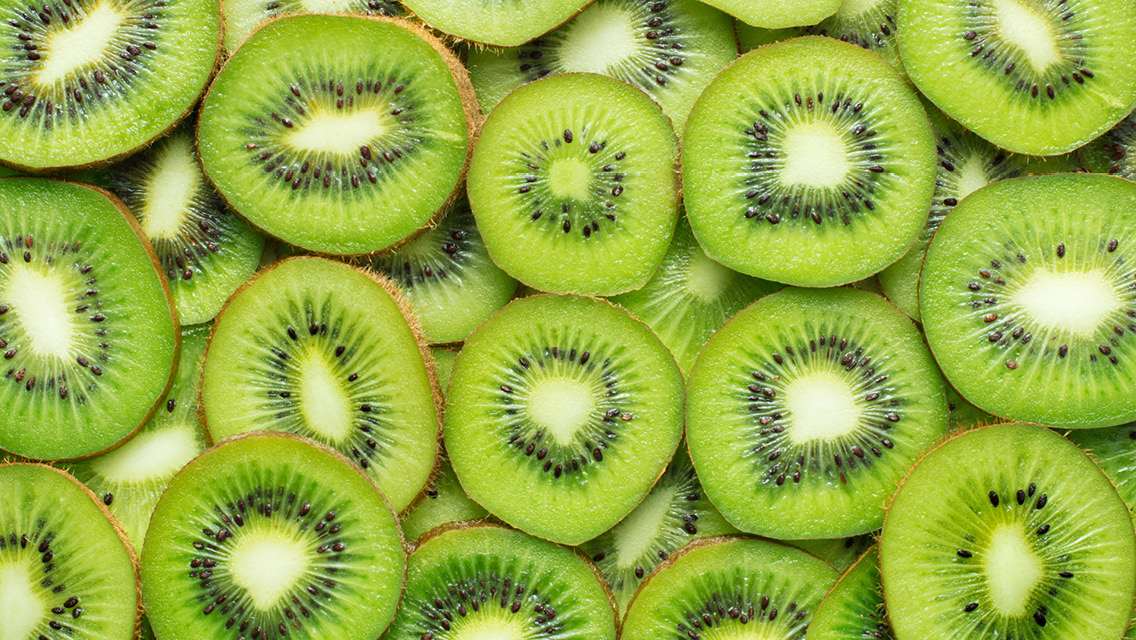
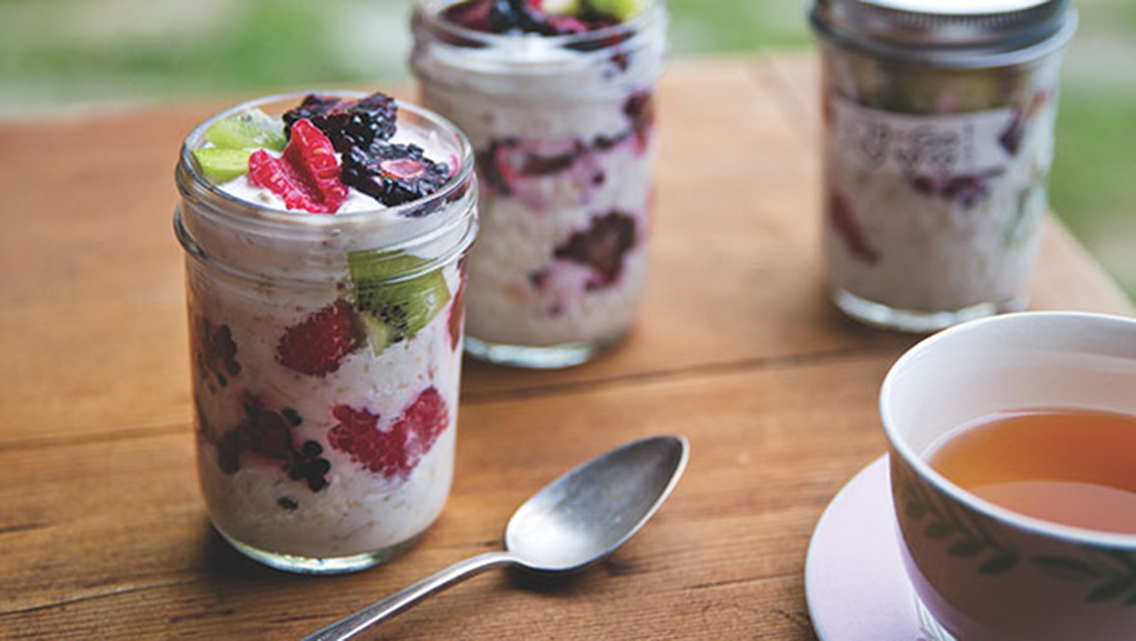
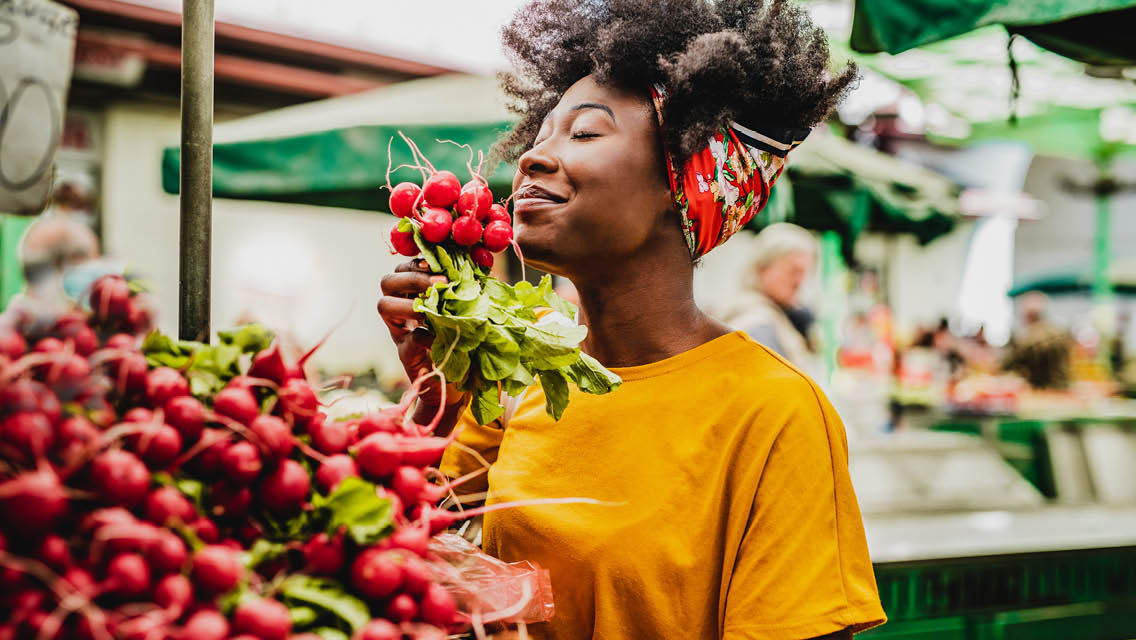
This Post Has 0 Comments